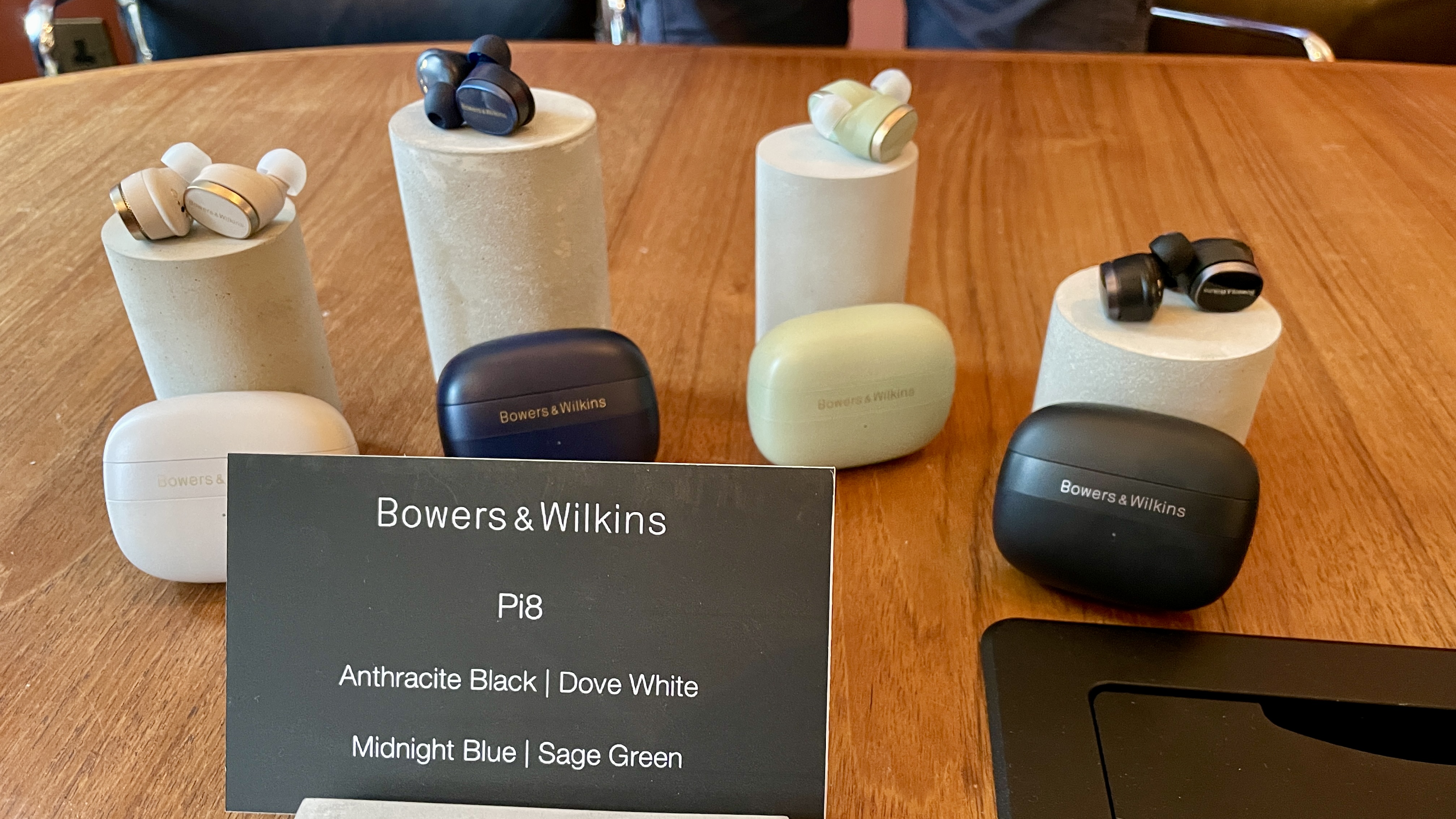B&W’s Pi6 and Pi8 noise-cancelling earbuds are here – and they solve my biggest problem
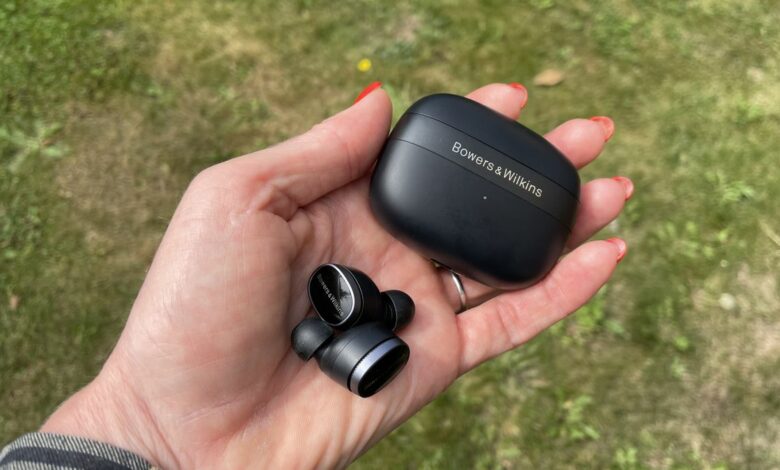
Another day, another earbud launch? Not if it’s Bowers & Wilkins – and not if it’s the Pi6 and Pi8. Why? Because I have a pair of the top-of-the-range Pi8 in my ears, and let me tell you, they fit like a dream – but let’s not get ahead of ourselves
Bowers & Wilkins has long prioritized sound quality and both new models – Pi6 and Pi8 – support aptX Adaptive up to 24-bit/96kHz for high-resolution audio fidelity.
So what are the main differences between the two proposals? Well, audiophiles will want to know that aptX Lossless support is reserved for the flagship Pi8, for CD-quality 16-bit 44.1kHz lossless audio quality via Bluetooth. Additionally, while the Pi6 features new 12mm bio-cellulose driver units (based on the tech used in the Bowers & Wilkins Px7 S2e, B&W’s 2023 upgrade to the really good PX7 S2 over-ears), the flagship Pi8 gets improved DAC, DSP and amplifier components from ADI, effectively bypassing Qualcomm’s solution within the chipset. It also uses the Carbon Cone driver unit technology first seen in the excellent top-end PX8 over-ears. There’s a thoughtful design correlation there, then.
Additionally, with the Pi8, you get the case retransmission feature, first seen in the Pi7 and January 2023’s Pi7 S2, which allows listeners to wirelessly re-send audio to their earbuds from connected analog or digital sources (think in-flight entertainment systems, home computers, or newer USB-C-enabled iPhones). It’s not the first case to do this – see the Jabra Elite 10 Gen 2 or LG Tone Free T90S for something similar – but B&W’s case can now retransmit in aptX Adaptive, at up to 24-bit/96kHz quality for a worthwhile performance upgrade over the Pi7 S2…
Comfort is the key
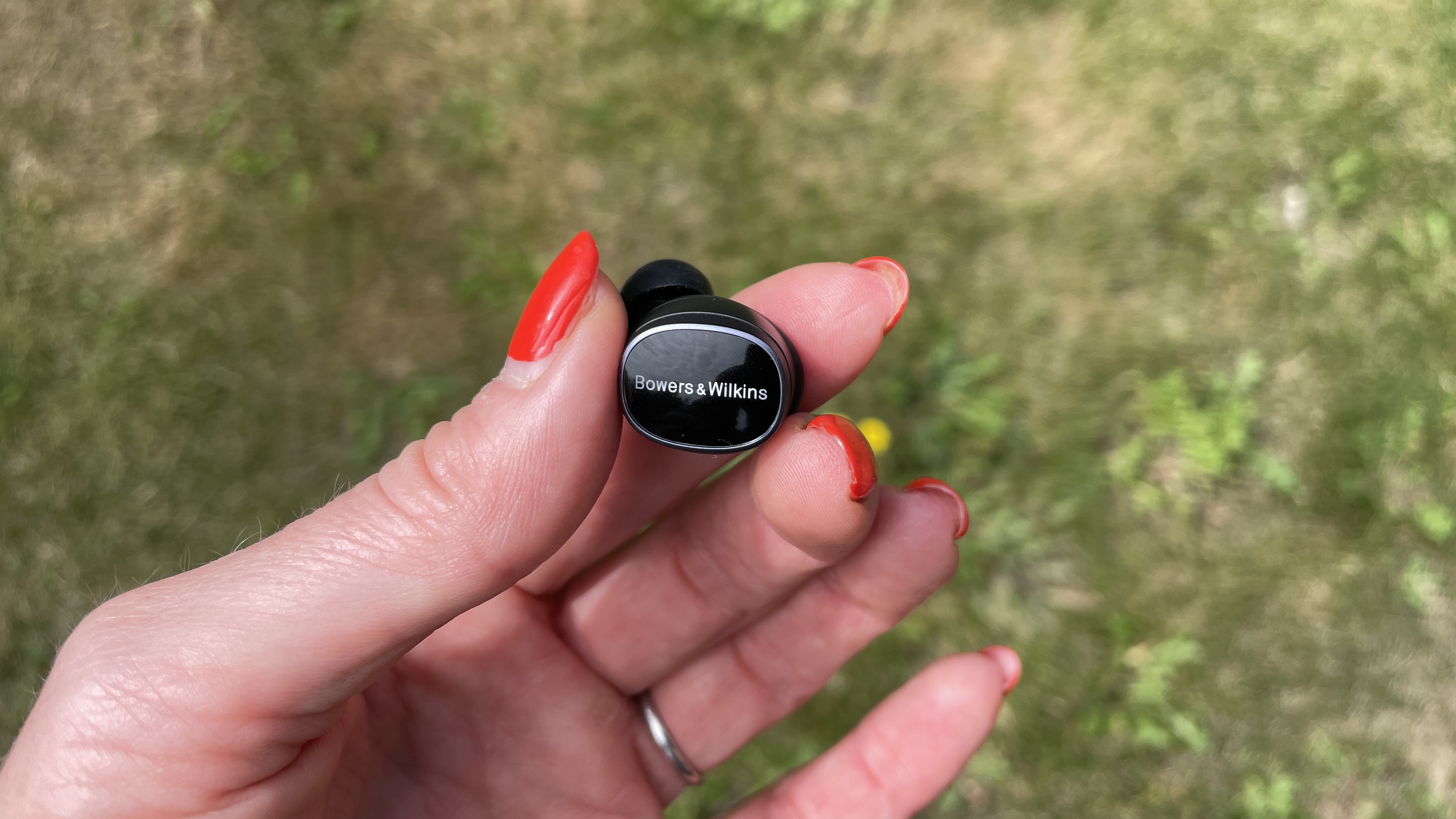
But for me, none of these are the biggest selling points in the company’s latest offering. So what is? Well, I did a thorough review of the Pi7 S2’s comfort, writing: “Here’s the thing: The Pi7 S2’s shape isn’t exactly small or ergonomic, to the point where I have to stretch my right ear around the main body of the device and push the eartip down to get it to stay in place.”
Yes, they were jewel-like and very pretty in my hand, but in my ears they felt less than stellar. And I’m happy to report that all that has now changed. In addition to the removal of all the metal caps in the interest of connectivity, the design of the driver housings has been completely overhauled and if I’m honest, it resembles the concha design of the gorgeous Technics EAH-AZ80 – which is no bad thing. The top of each earbud is also now a large capacitive touch surface with more advanced sensors, and in my early testing the on-ear controls are responsive and useful.
The Pi8 are undoubtedly the most comfortable earbuds the brand has ever made, even at 7g (which sounds heavy in this room, but they don’t feel it) and since sound quality was never the issue with B&W’s output, I predict a enormous hit. This is of course not a full review, but these are my first impressions.
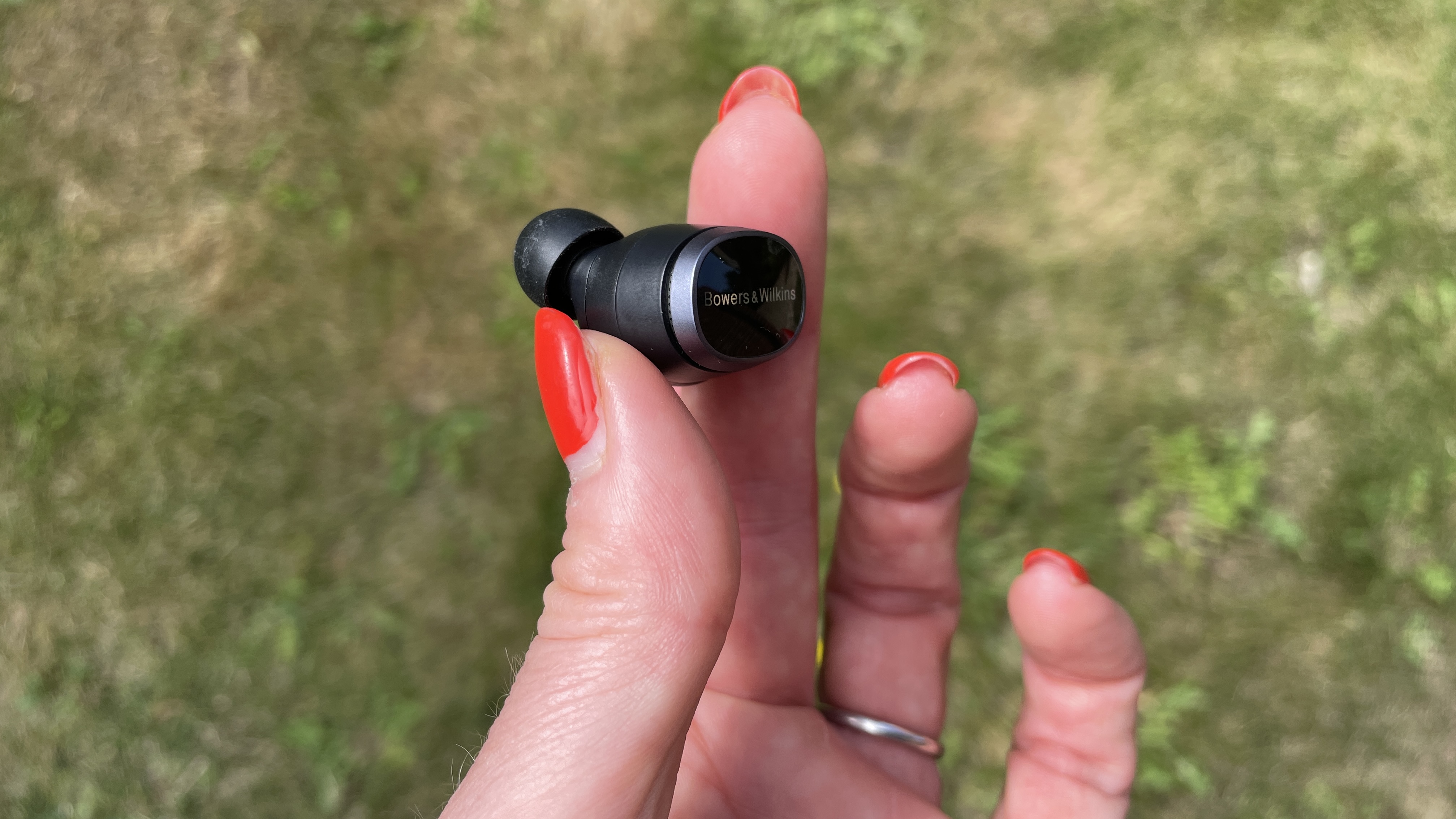
Both sets of B&W earbuds use the latest Bluetooth 5.4 specification, offering multipoint support for two devices, IP54 protection (for the earbuds only) and improvements to the setup and user experience, including ‘Made for iPhone’ (MFi) support for seamless integration with iOS devices and Google Fast Pair (GFP) support, which was promised shortly after launch.
Pi8 owners also have access to a user-adjustable five-band Bowers & Wilkins Advanced EQ feature, allowing them to tailor the earbuds’ sound to their own liking (Pi6 owners can adjust bass and treble responses). Additionally, both the Pi6 and Pi8 feature three carefully placed microphones in each earpiece.
As you’d expect, the Pi6 are built around the same noise-cancelling platform used in the outgoing Pi7 S2, while the Pi8 carries over the tech found in the flagship Px8 over-ears. This is paired with a new noise-cancelling ANC algorithm developed by B&W, and the company told me that while they’re not making big claims about the active solution (it was already pretty good), you do get up to 5dB of additional noise cancellation passively thanks to those design upgrades.
Endurance speaks to us – and money is king
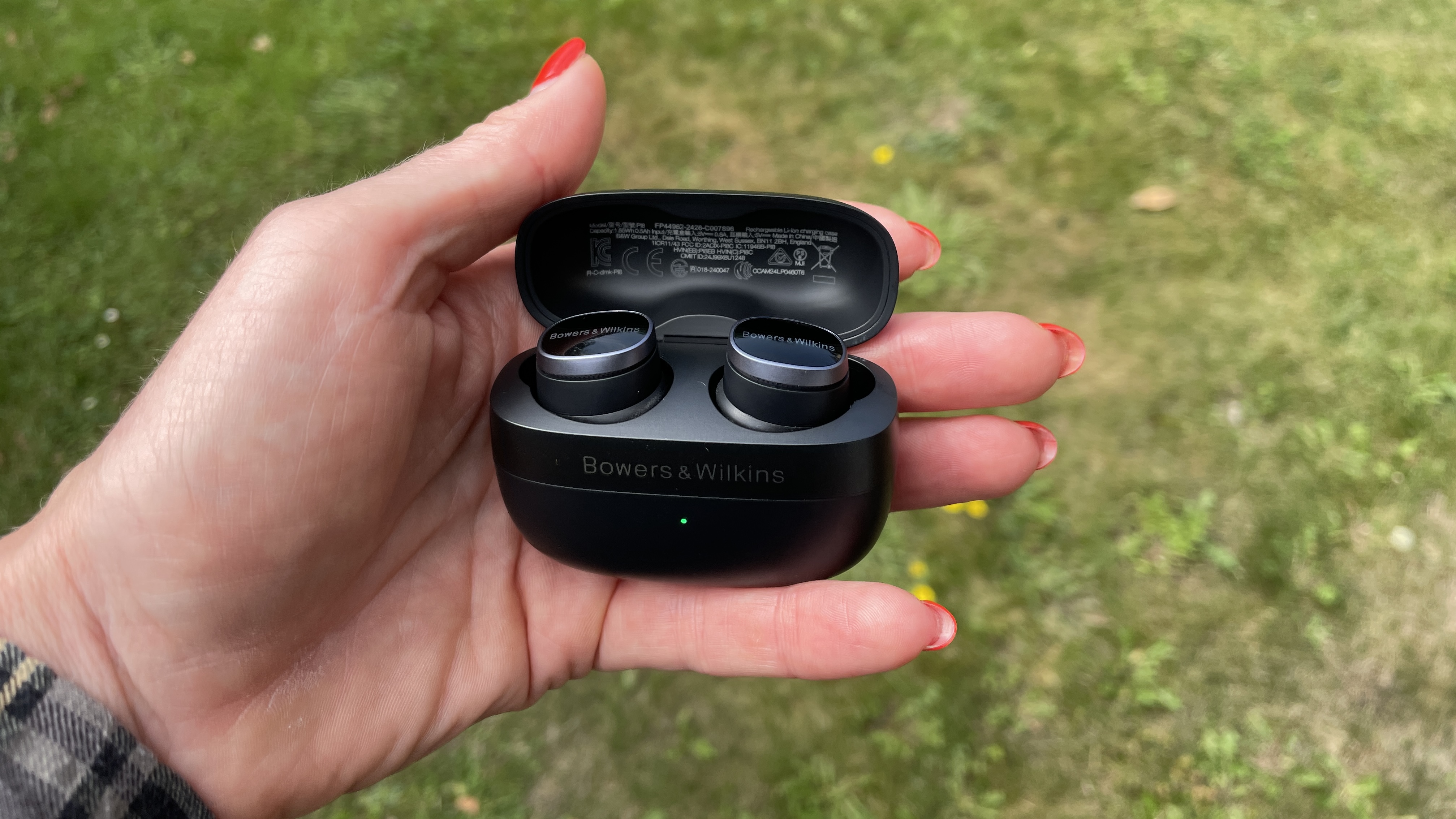
Both the Pi6 and Pi8 offer longer battery life than their older siblings – although not a lot of more. The Pi6 promises up to eight hours of listening time through the earbuds before needing a charge, with the charging case offering up to another 16 hours of use for a combined total playtime of 24 hours. The Pi8 offers 6.5 hours through the earbuds and another 13.5 hours through the case, for 20 hours of total use – but the good news is that all of these numbers are with ANC on. For the record, the Pi7 S2’s stamina was five hours through the earbuds (ANC off) and another 16 hours through the charging case, for a total of 21 hours.
The Pi6 and Pi8 come in a variety of finishes. The Pi6 is offered in Storm Grey, Cloud Grey, Forest Green and Glacier Blue, while the Pi8 is available in Anthracite Black, Dove White, Jade Green and Midnight Blue.
The Pi8 is available from today (August 21) for $399 / £349 / AU$599. The Pi6 is available from September 15 for $249 / £219 / AU$449.
Considering the 2021 Pi7 also launched for $399 / £349 / AU$699, it’s good to see Bowers & Wilkins not jacking up the asking price – though that’s still top-end money compared to rivals in our best noise-cancelling earbuds guide. Stay tuned for my full, in-depth review of the Bowers & Wilkins Pi8.
